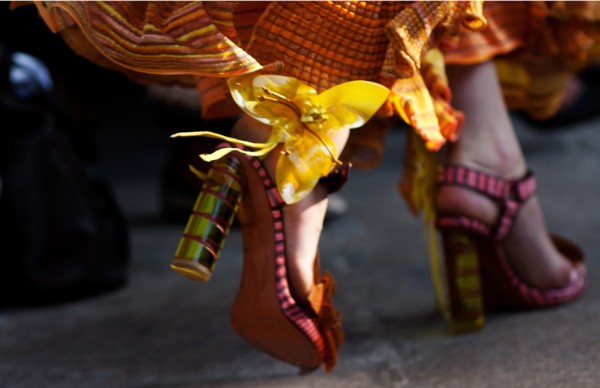The New York Times really ignited a s***storm in the fashion blogosphere with their recent article, “Who Am I Wearing? Funny You Should Ask“, in which a reporter reveals that fashion brands have started paying (or at the very least, lending) to get their clothing on the backs of street style’s most popular stars. When I first read the piece I was just excited to see a familiar face featured so prominently. I didn’t think it was a big deal. Then commentary started popping up on all the sites I read: Fashionista, Man Repeller, Racked, Racked discussing Man Repeller, and so forth. Apparently people are really upset that individuals are being given clothing/paid to wear clothing for the express purpose of getting it featured on a street style blog. In the interest of full disclosure, I have been gifted items, and always acknowledge the provenance of these items. It is quite common to see “c/o” when bloggers cite their daily wardrobe. I don’t see the difference in a brand spending money/product for placement on a blogger’s own site versus someone else’s – via street style. It just seems like the next logical – even lateral – step. Rather, here’s what’s really going on:
Brands giving bloggers (and other popular street style subjects) clothes to wear – and be photographed in – damages the aura of accessibility that’s inherent in street style photography; but that accessibility is based on false assumptions.
One thing that makes street style special is that creative looks are assembled by real people from stuff out of their own closets. This is indeed more relatable than a spread in a magazine. But just because it looks accessible doesn’t mean it ever was. If you’re reading a street style blog, what’s the difference if the luxurious item in question came from their closet via a brand, or money from a trust fund, or a wealthy spouse? Or doting parents? Or maybe she got a bonus at work and decided to treat herself! You can never know how anybody affords anything, no matter how “accessible” they make it look. I hate to be so cynical, but if the brand is out of reach anyway, does it matter how the street style subject acquired it? It seems that it does, but it shouldn’t.
Photos via Refinery29, the Sartorialist, Fashion.ist.




What's your opinion?